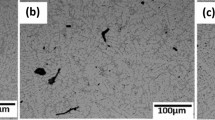Abstract
In view of an upcoming scrap wave and the need for products with lower carbon footprint, there is an urgent need to increase the recycled fraction in wrought aluminum alloys. However, due to the narrow compositional limits of conventional aluminum wrought alloys and the higher impurity levels in scrap material, the applicable recycling content is limited. Therefore, new approaches need to be identified to increase the recycled content. The introduction of the AlMgZn(Cu) Crossover alloy concept may prove to be a step forward in escaping the corset of conventional alloying systems. The 5/7-Crossover alloy not only overcomes the long-standing trade-off between the excellent formability of 5xxx-series alloys and the outstanding strength of 7xxx-series alloys by combining both properties but may also tolerate a higher content of impurity elements. The scope of this study is to properly address the 5/7-Crossover alloy’s sustainability in terms of its ability to be manufactured from secondary raw materials. AlMgZn(Cu) alloys with different tramp element concentrations were investigated.
Access this chapter
Tax calculation will be finalised at checkout
Purchases are for personal use only
Similar content being viewed by others
References
Hirsch J (2011) Aluminium in Innovative Light-Weight Car Design. Materials Transactions 52:818–824. https://doi.org/10.2320/matertrans.L-MZ201132.
Hirsch J, Søreide J, Payer T (2020) Environmental Advantages of Sustainable Aluminum Structures. Proceedings of 14th International Aluminium Conference (INALCO-2019) (Environmental Advantages of Sustainable Aluminum Structures). Japan Light Metal Welding Association & Japan Aluminium Association vol. 58:125–130.
Carle D, Blount G (1999) The suitability of aluminium as an alternative material for car bodies. Materials & Design 20:267–272. https://doi.org/10.1016/S0261-3069(99)00003-5.
Das SK, Green JA, Kaufman JG (2007) The development of recycle-friendly automotive aluminum alloys. JOM 57:47–51.
AMAG Austria Metall AG AluReport 02 2022.
AMAG Austria Metall AG AluReport 01 2023.
Stemper L, Tunes MA, Tosone R et al. (2021) On the potential of aluminum crossover alloys. Progress in Materials Science. https://doi.org/10.1016/j.pmatsci.2021.100873.
Stemper L, Tunes MA, Dumitraschkewitz P et al. (2021) Giant hardening response in AlMgZn(Cu) alloys. Acta Materialia 206:116617. https://doi.org/10.1016/j.actamat.2020.116617.
Pan Y, Di Zhang, Liu H et al. (2021) Precipitation hardening and intergranular corrosion behavior of novel Al–Mg–Zn(-Cu) alloys. Journal of Alloys and Compounds 853:157199. https://doi.org/10.1016/j.jallcom.2020.157199.
Cao C, Di Zhang, Wang X et al. (2016) Effects of Cu addition on the precipitation hardening response and intergranular corrosion of Al-5.2Mg-2.0Zn (wt.%) alloy. Materials Characterization 122:177–182. https://doi.org/https://doi.org/10.1016/j.matchar.2016.11.004.
Caroll MC, Mills MJ, Daehn GS et al. (2000) Effects of Zn additions on the grain boundary precipitation and corrosion of Al-5083. Scripta Materialia 42:335–340.
Meng C, Di Zhang, Zhuang L et al. (2016) Correlations between stress corrosion cracking, grain boundary precipitates and Zn content of Al–Mg–Zn alloys. Journal of Alloys and Compounds 655:178–187. https://doi.org/10.1016/j.jallcom.2015.09.159.
Geng Y, Di Zhang, Zhang J et al. (2020) On the suppression of Lüders elongation in high-strength Cu/Zn modified 5xxx series aluminum alloy. Journal of Alloys and Compounds 834:155138. https://doi.org/10.1016/j.jallcom.2020.155138.
Geng Y, Di Zhang, Zhang J et al. (2020) Zn/Cu regulated critical strain and serrated flow behavior in Al–Mg alloys. Materials Science and Engineering: A 795:139991. https://doi.org/10.1016/j.msea.2020.139991.
Løvik AN, Modaresi R, Müller DB (2014) Long-term strategies for increased recycling of automotive aluminum and its alloying elements. Environ Sci Technol 48:4257–4265. https://doi.org/10.1021/es405604g.
Que Z, Wang Y, Mendis CL et al. (2022) Understanding Fe-Containing Intermetallic Compounds in Al Alloys: An Overview of Recent Advances from the LiME Research Hub. Metals 12:1677. https://doi.org/10.3390/met12101677.
Que Z, Zhou Y, Wang Y et al. (2021) Effects of Mg addition on the Al6(Fe,Mn) intermetallic compounds and the grain refinement of α-Al in Al-Fe-Mn alloys. Materials Characterization 171:110758. https://doi.org/10.1016/j.matchar.2020.110758.
Trink B, Weißensteiner I, Uggowitzer PJ et al. (2023) Processing and microstructure–property relations of Al-Mg-Si-Fe crossover alloys. Acta Materialia 257:119160. https://doi.org/10.1016/j.actamat.2023.119160.
Engler O, Kuhnke K, Hasenclever J (2017) Development of intermetallic particles during solidification and homogenization of two AA 5xxx series Al-Mg alloys with different Mg contents. Journal of Alloys and Compounds 728:669–681. https://doi.org/10.1016/j.jallcom.2017.09.060.
Schmid F, Stemper L, Ebner T et al. (2019) Industry-oriented sample preparation of 6xxx and 5xxx aluminium alloys in laboratory. Proceedings of EMC 2019.
Bartosiaki BG, Pereira JAM, Bielefeldt WV et al. (2015) Assessment of inclusion analysis via manual and automated SEM and total oxygen content of steel. Journal of Materials Research and Technology 4:235–240. https://doi.org/10.1016/j.jmrt.2015.01.008.
Nuspl M, Wegscheider W, Angeli J et al. (2004) Qualitative and quantitative determination of micro-inclusions by automated SEM/EDX analysis. Anal Bioanal Chem 379:640–645. https://doi.org/10.1007/s00216-004-2528-y.
Walusinski O (2018) Doctoral Thesis. In: Walusinski O (ed) Georges Gilles de la Tourette. Oxford University Press, pp 129–144.
Corti CW, Cotterill P, Fitzpatrick GA (1974) The Evaluation of the Interparticle Spacing in Dispersion Alloys. International Metallurgical Reviews 19:77–88. https://doi.org/10.1179/imtlr.1974.19.1.77.
Bale CW, Chartrand P, Degterov SA et al. (2002) FactSage thermochemical software and databases. Calphad 26:189–228. https://doi.org/10.1016/S0364-5916(02)00035-4.
Ostermann F (2007) Anwendungstechnologie Aluminium, 2nd edn. Springer, Berlin Heidelberg.
Belov NA, Aksenov AA, Eskin DG (2002) Iron in Aluminium Alloys. CRC Press, London.
Liu Y, Luo L, Han C et al. (2016) Effect of Fe, Si and Cooling Rate on the Formation of Fe- and Mn-rich Intermetallics in Al–5Mg–0.8Mn Alloy. Journal of Materials Science & Technology 32:305–312. https://doi.org/10.1016/j.jmst.2015.10.010.
Závodská D, Tillová E, Švecová I et al. (2019) The Effect of Iron Content on Microstructure and Porosity of Secondary AlSi7Mg0.3 Cast Alloy. Period Polytech Transp Eng 47:283–289. https://doi.org/10.3311/PPtr.12101.
Author information
Authors and Affiliations
Corresponding author
Editor information
Editors and Affiliations
Rights and permissions
Copyright information
© 2024 The Minerals, Metals & Materials Society
About this paper
Cite this paper
Samberger, S., Stemper, L., Uggowitzer, P.J., Tosone, R., Pogatscher, S. (2024). Influence of Solidification Rate and Impurity Content on 5/7-Crossover Alloys. In: Wagstaff, S. (eds) Light Metals 2024. TMS 2024. The Minerals, Metals & Materials Series. Springer, Cham. https://doi.org/10.1007/978-3-031-50308-5_28
Download citation
DOI: https://doi.org/10.1007/978-3-031-50308-5_28
Published:
Publisher Name: Springer, Cham
Print ISBN: 978-3-031-50307-8
Online ISBN: 978-3-031-50308-5
eBook Packages: Chemistry and Materials ScienceChemistry and Material Science (R0)




